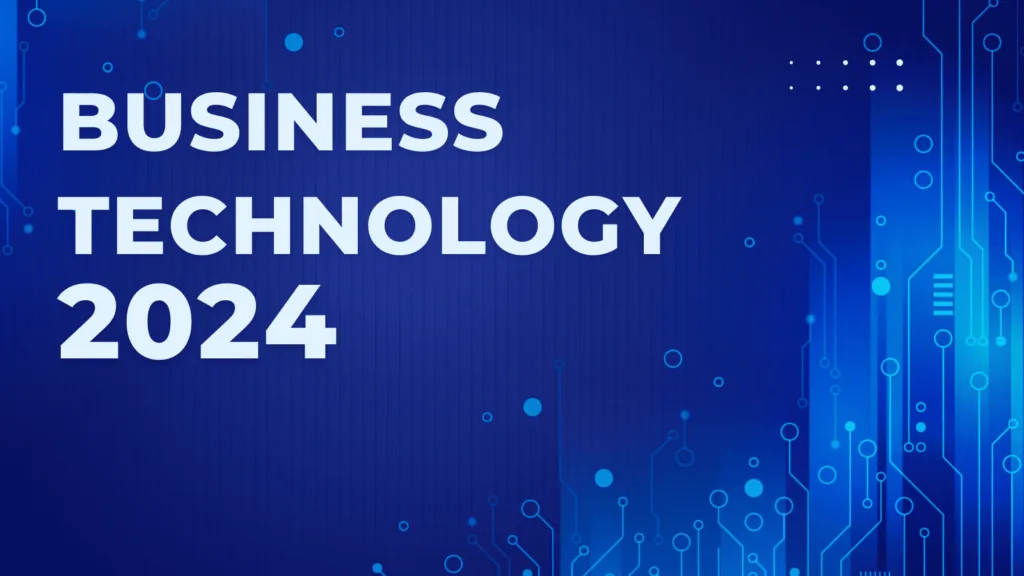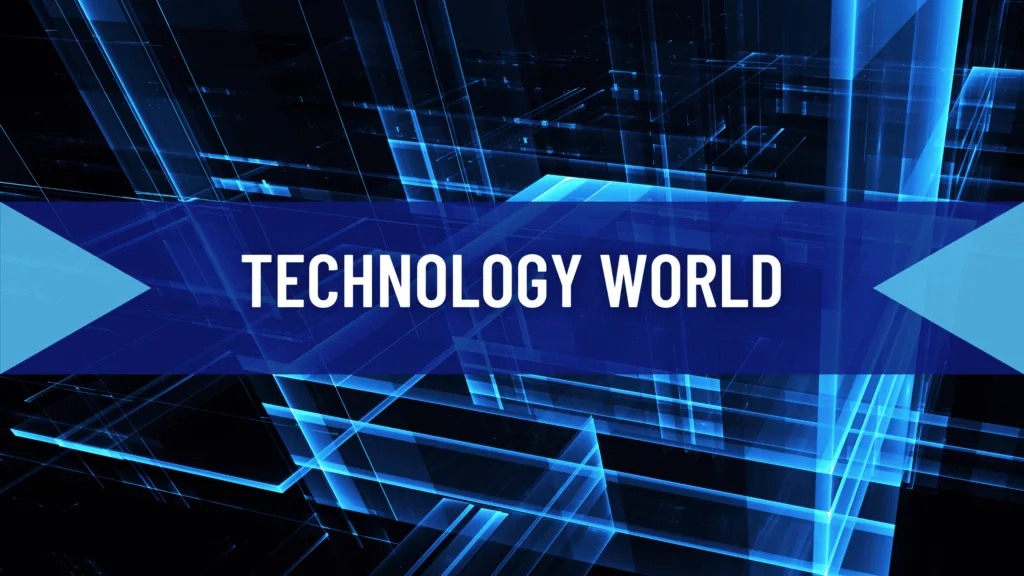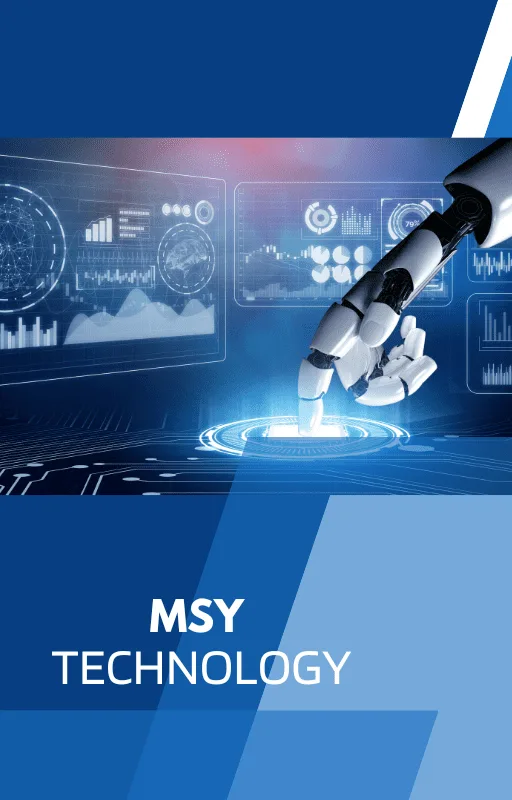Our digital world is marked by rapid Technology Trends in Business, where more than 70% of businesses intend to enhance their investments in technology in the future years. Further, such a fast pace of transformations points to the need to be aware of new trends that can boost effectiveness to achieve better competitiveness. For instance, a study showed in the past year that the adoption of AI is anticipated to add productivity of up to 40% by the year 2035. However, remote work solutions have gone up with 70% of the employees demanding the use of hybrid work models.
Moreover, the increasing importance of the global blockchain market is expected to grow to $163 billion by 2027. Therefore, in this article, you will understand the scope of these trends and how they impact the business landscape.

Artificial Intelligence and Automation
AI involves devising machines that can do activities that are normally done by human beings, for example, thinking, learning, and decision-making. In business, AI corresponds to such nodes as natural language processing, predictive analytics, and various automation of repetitive tasks, which redefine business and customer relationships.
Why It Can Hurt Productivity and Efficiency
AI and automation enhance efficiency and Productivity in all sectors of the organization by various folds. Research indicates that productivity can be boosted by up to 40% through AI since most of the boring tasks are replaced freeing the human resource to work on critical projects that can unlock value for companies and organizations.
AI Applications in Industries
Digital AI solutions and applications are gaining rapid adoption in many industries. In healthcare AI systems assist in diagnosis by analyzing medical images faster. In finance, working in real-time, algorithms look for signs of fraudulent activity. Likewise in retail, the use of recommendation engines based on Artificial Intelligence( AI) enhances customer experience hence enhancing sales.
Future Opportunity and Analysis of Ethical Issues
AI is promising for the future currently, possible estimates for AI’s impacts reveal that the technology could add $15.7 trillion to the global economy within the next decade. However such advancement comes with ethical issues like concern for personal data and privacy and increasingly loss of employment. Solving these problems will be crucial for the further appropriate and constructive incorporation of artificial intelligence into organizational processes.
Remote Work Technology Trends in Business
The COVID-19 pandemic gave impetus to the decentralization of work, and a survey in 2021 showed that 83% of employees would like to have more flexible working time arrangements. When many companies locked down, learning that remote work was equally productive, there was no turning back and the shift in expectations of workplace culture is now permanent.
Essential tools and platforms facilitating remote work
As a result, the most popular enablers of flexible workers’ collaboration have become a specific category of applications, including Zoom, Slack, Trello, and Asana, among others. These technologies promote effective interaction and collaboration so that the teams stay efficient irrespective of distance.
Benefits For Technology Trends in Business
The flexible working models have many advantages with them including high employee engagement and a better chance to attract diverse candidates. However, it remains an issue, which includes the possibility of communication breakdown and problems in satisfaction of company culture. I have learned that to address the conflict created by the need to have face-to-face communication with the scalability to accommodate large student populations the following strategies can help.
Future trends in remote collaboration
Holoportation is also expected to be the next step of video teleconferencing in the future; virtual reality and augmented reality applications will also improve meeting experiences. Also, since organizations are fine-tuning the processes of teleworking, the focus will be delivered to work-flexibility mandates and drafts, making the hybrid work model sustainable.
Cloud Computing
Cloud computing therefore is a model through which different computing conditions are centralized in remote locations where they are used and made to gain access through certain online services like the web. It means that storage like, databases or applications becomes available for use on a request or demand hence enhanced use.
Advantages: scalability, cost efficiency, and flexibility
Another good thing about cloud computing is its flexibility; businesses can easily make changes to the amount of bandwidth they require. Also, the support offered by the clouds decreases expenses, because organizations only buy the service they need, excluding the expenses for the construction of material facilities. In addition to this, the portability of services in this cloud ensures that members from different locations of the geographical world are in a position to work together thus increasing efficiency.
Major cloud service providers and their offerings
Major CSPs are Amazon Web Service, Microsoft’s Azure, and Google’s Cloud Platform. AWS has a variety of services from computing services to storage services. Whereas Microsoft Azure is compatible with other Microsoft products, GCP emphasizes a data analytical and machine learning aspect, which meets various requirements.
Trends in multi-cloud and hybrid-cloud strategies
The current tendency shows a higher inclination towards multi-cloud and hybrid-cloud solutions where organizations are using multiple service providers to avoid being trapped in a particular company and also gain better flexibility. As of now, more recent data reveal that over 80% of enterprises will be multi-cloud by 2025, as companies look for ways to get the most out of their cloud environment and continue to maintain that level of control over their cloud resources.
Cybersecurity Innovations
Since rapid change has become the norm in organizations, the issue of cybersecurity has emerged as critically significant. Another research showed that the cases of cyber-attacks have risen by 400% since the virus outbreak, and that means that security should be improved. Large organizations have to ensure the security of their data in the new millennium to prevent losses and maintain the confidentiality of their clients.
Key threats facing businesses today
Several important risks are relevant for today’s businesses, such as ransomware attacks, phishing, and data leak. Ransomware attacks are known to cost businesses $20 billion and above by 2021, this, in isolation from other attacks. Third, the current increase in working from home has exposed organizations to new vectors for cybercrime.
Emerging technologies in cybersecurity (e.g., AI-driven security, zero trust)
New technologies are changing the face of Cybersecurity. With the help of AI mechanisms, security systems process the enormous amount of information necessary for threat detection and neutralization in real-time mode. The zero trust model, which supposes that threats can come from inside and from outside the network, is also emerging, which enforces organizations to use stricter access control measures and constant verification.
Strategies for building a robust cybersecurity framework
As a result, to create a proper cybersecurity strategy businesses should use firewalls, IDS, and training as the key preventive measures. Other include Security audits that need to be done recurrently, and the practices of the incident response plan, which need to be rehearsed at frequent intervals as well. Moreover, practicing cybersecurity among employees can go a long way to alleviate the constant threat of human error in a firm.
Blockchain Technology
Blockchain is a distributed, distributed database that can provide the basis for secure storing of data. Although it became popular via cryptocurrencies such as Bitcoin, it is not just limited to this area of usage. Blockchain can revolutionize many different sectors due to its ability to create a tamper-proof record of transactions.
Applications in supply chain, finance, and digital identity
In the context of the supply chain, blockchain increases reliability within supply channels so that companies can easily monitor products from the point of production to the point of use by consumers. In finance, it enables faster and more secure payment thus doing away with the middlemen. Besides, the application of blockchain technology is accomplished in digital identity through which people can manage and share their information safely.
Potential benefits: transparency, security, and efficiency
Also, thanks to the technology there is no place for controversies since all the participants of the blockchain have equal access to similar data. There is better record security as opposed to central data store because it is cumbersome for an intruder to change records. In addition, the field of application of blockchain technology is to improve and enhance operational efficiency and minimalization of operating costs.
Future outlook and challenges to adoption
There is high potential for blockchain technology in the future, as has been estimated to bring more than $3 trillion to the global economy by 2030. They include the regulation of blockchain technology; another problem that is yet to be solved is the scalability of this technology and how blockchain technology of different networks can connect or interface.
Internet of Things (IoT)
IoT stands for the Internet of Things which is the connection of devices with each other and with the internet. IoT is important in business as it optimizes business processes and decision-making systems, offers real-time approaches to business, and increases customer satisfaction among other benefits that are hard to estimate.
Examples of IoT applications in various sectors
As it has been demonstrated IoT applications are presented across sectors. Within production, smart sensors maintain a check on equipment conditions to avoid resultant unscheduled breakdowns. In healthcare, wearable devices monitor and record the patient’s vital signs in real time. In agriculture, IoT solutions help to control irrigation and crops.
Benefits of real-time data and predictive analytics
IoT entails real-time data that assists business organizations in understanding how their undertakings and customers behave. This information is then used by predictive analytics to foretell future trends, as well as potential problematic areas, so that organizations are able, on the one hand, to save money and, on the other hand, improve their efficiency.
Challenges and Security Concerns with IoT
Altogether, IoT has its features, yet it can be detected that the sphere has some difficulties, and the key problem is the security issue. Every time the number of interconnected gadgets rises; the risks heighten and transform the systems into open targets for hackers.
Conclusion
Technology Trends in Business are vital to businesses in today’s complex environment, for those that seek higher levels of performance. Since seven out of ten companies are enacting digital transformation, it’s crucial to remain current to form novel solutions that create a competitive edge. Management calls upon organizations to adapt their strategies and capture the growing technologies to improve productivity and customer service.
Therefore, trends such as AI, IoT, and blockchain, will define the future of technology Trends in Business and those who would adapt to the changes. These changes will have to be accepted to ensure the firm’s future growth and prosperity.


